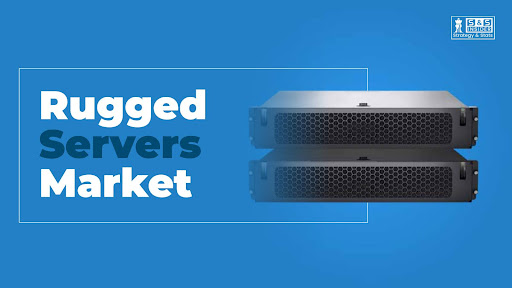Rugged servers are specialized computing systems designed to operate in extreme environments where conventional IT equipment would fail. Built with reinforced chassis, advanced cooling systems, and vibration-resistant designs, these servers provide uninterrupted performance in industries such as defense, aerospace, energy, mining, and transportation. Unlike traditional servers that thrive in climate-controlled data centers, rugged servers are deployed in remote locations, battlefield conditions, or mobile platforms where reliability is crucial. Their adaptability to withstand high temperatures, dust, moisture, and shocks makes them indispensable for mission-critical operations.
Market Size and Forecast
As per SNS Insider, “The Rugged Servers Market Size was valued at USD 648.08 million in 2024 and is expected to reach USD 994.6 million by 2032, growing at a CAGR of 5.5% over the forecast period 2025–2032.”
Market Size and Forecast:
Market Size in 2024: USD 648.08 Million
Market Size by 2032: USD 994.6 Million
CAGR: 5.5% from 2025 to 2032
Base Year: 2024
Forecast Period: 2025–2032
Historical Data: 2021–2023
This steady growth reflects the increasing demand for ruggedized computing solutions as industries embrace digital transformation and data-driven operations, even in the harshest conditions.
Growing Applications of Rugged Servers
The applications of rugged servers are expanding across industries. In the defense and aerospace sector, they support real-time mission control, communication systems, and surveillance technologies. In the energy sector, rugged servers are critical in oil rigs, wind farms, and power grids, ensuring continuous monitoring and control. Mining operations rely on these systems for safety, data collection, and automation in underground environments. Similarly, the transportation industry integrates rugged servers in trains, ships, and aircraft for navigation, diagnostics, and passenger safety. These diverse applications highlight the rising reliance on rugged servers for performance where failure is not an option.
Key Drivers of the Rugged Servers Market
Several factors are driving the growth of the rugged servers market. First, the global increase in defense budgets and modernization programs is boosting demand for high-performance computing in military operations. Second, the growth of industrial IoT and automation requires robust edge computing devices that can withstand tough conditions. Third, the expansion of renewable energy projects, such as offshore wind farms, calls for resilient IT infrastructure to manage distributed assets. Finally, the shift toward real-time analytics and AI-powered applications is fueling the adoption of rugged servers capable of processing large volumes of data close to the source.
Technological Innovations in Rugged Servers
Rugged server manufacturers are continually innovating to meet rising industry demands. Advancements include the integration of liquid cooling systems, solid-state drives (SSDs), and modular architectures for scalability. Many rugged servers are now equipped with advanced cybersecurity features to protect sensitive data in mission-critical environments. Additionally, with the rise of edge computing, rugged servers are designed to process and analyze data locally, minimizing latency and reducing reliance on centralized data centers. These innovations not only enhance reliability but also align rugged servers with modern IT requirements.
Challenges in the Rugged Servers Market
Despite their growing importance, rugged servers face certain challenges. One of the primary concerns is their higher cost compared to conventional servers. The specialized design and testing processes required to meet military and industrial standards add to the overall expense. Additionally, the bulkier form factors of rugged servers can limit deployment in space-constrained environments. Another challenge lies in the rapid pace of technological evolution, which requires frequent upgrades to stay compatible with evolving software and hardware ecosystems. Addressing these challenges will be key to maintaining market momentum.
Regional Insights into Rugged Servers Market
North America currently leads the rugged servers market due to significant defense spending, advanced industrial infrastructure, and strong presence of key manufacturers. Europe follows closely, with demand driven by aerospace and automotive applications. Meanwhile, the Asia-Pacific region is emerging as a high-growth market, particularly in countries like China, India, and Japan, where rapid industrialization and defense modernization are fueling adoption. The Middle East is also showing promising potential due to investments in energy and security infrastructure. This global spread highlights the diverse role rugged servers play across industries and geographies.
Future Outlook of the Rugged Servers Market
The rugged servers market is set for steady growth, fueled by edge computing, AI, and greater reliance on remote monitoring. The push toward automation and digitalization in industries that operate in harsh environments will further strengthen demand. As manufacturers continue to innovate with more compact, energy-efficient, and intelligent rugged servers, adoption will become even more widespread. By 2032, rugged servers are expected to play a central role in ensuring seamless operations in industries that cannot afford downtime.














